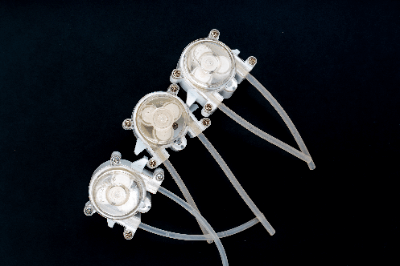What Is a Peristaltic Pump?

A peristaltic pump is a device that pumps solution through soft tubing. It has multiple rollers that rotate and crush the tubing, thus moving the solution. This continuous rotation allows for constant pumping of the solution, with flow rate adjustments possible by controlling the rotation speed.
The pump works with any flexible tubing, but chemical-resistant silicone tubing is often used when pumping chemicals.
Uses of Peristaltic Pumps
Peristaltic pumps are ideal for continuously and quantitatively pumping solutions, particularly in large volumes. Applications include chromatography, dialysis, and various types of spectrometers, like inductively coupled plasma atomic emission spectrometers (ICP-AES) and inductively coupled plasma mass spectrometers (ICP-MS). They are versatile enough to handle a range of solutions, including those with higher viscosity.
Principle of Peristaltic Pumps
The pump’s rollers rotate, crushing the tubing and creating a vacuum that draws the solution into the tube. Continuous rotation results in a consistent vacuum, enabling the liquid to be pumped effectively.
The tubing is available in various materials and sizes to accommodate different solutions. Common choices include silicone tubing and Tygon tubing. The tubing material should be resistant to the pumped solution. It’s important to note that only soft tubing is compatible, and due to physical wear and tear, both tubes and roller parts may need replacing over time.